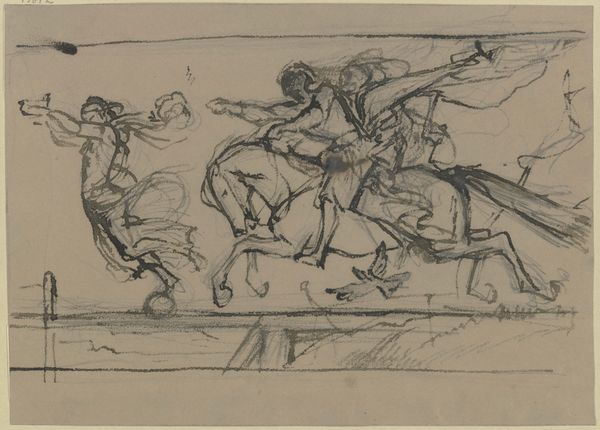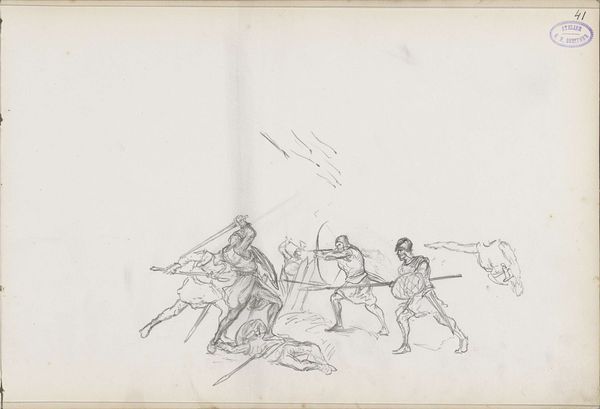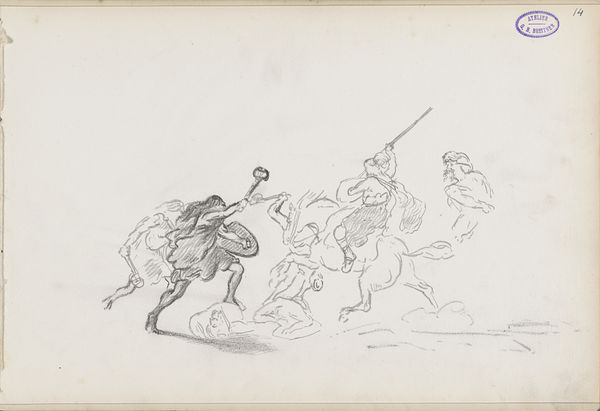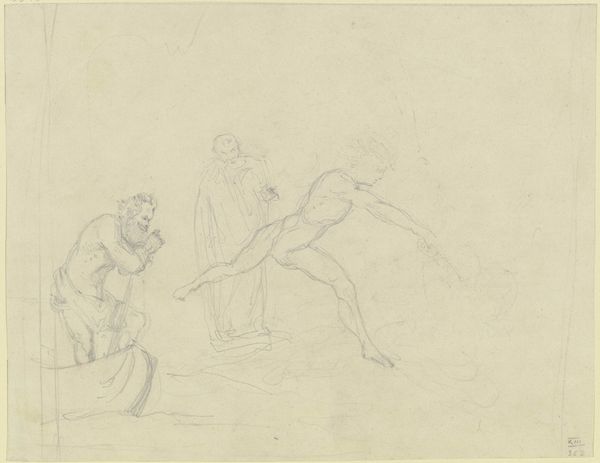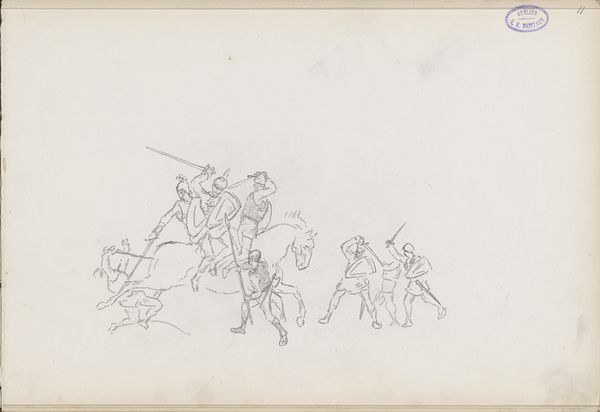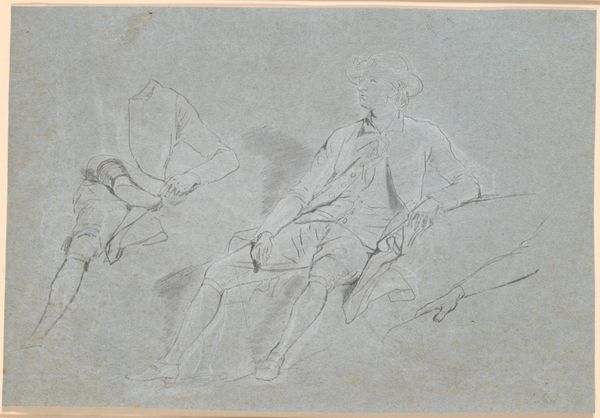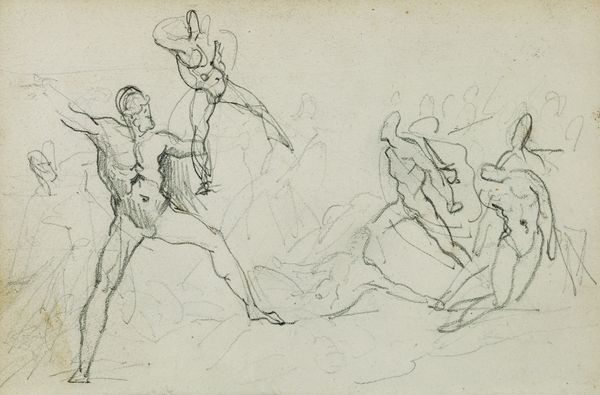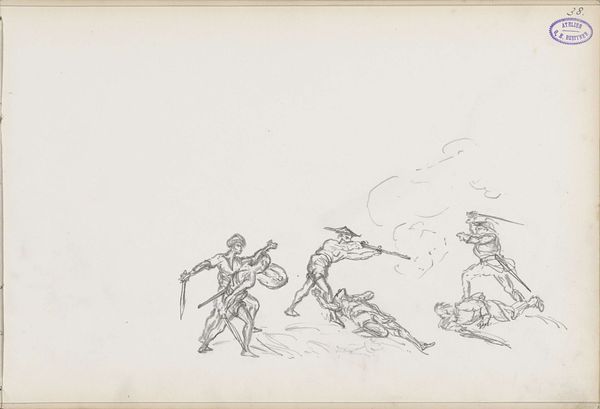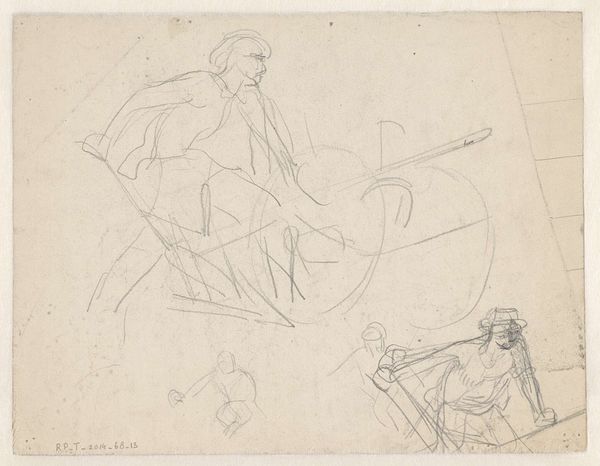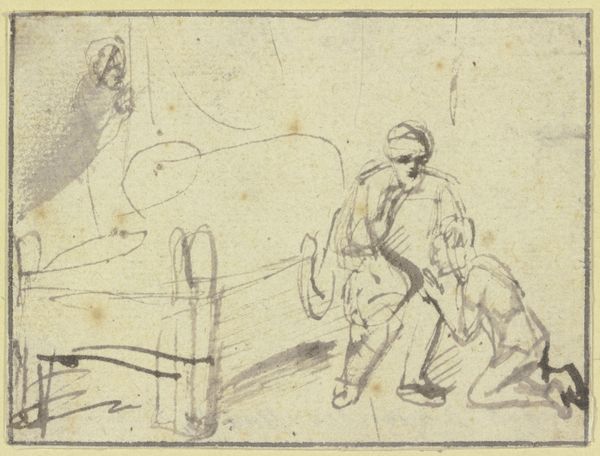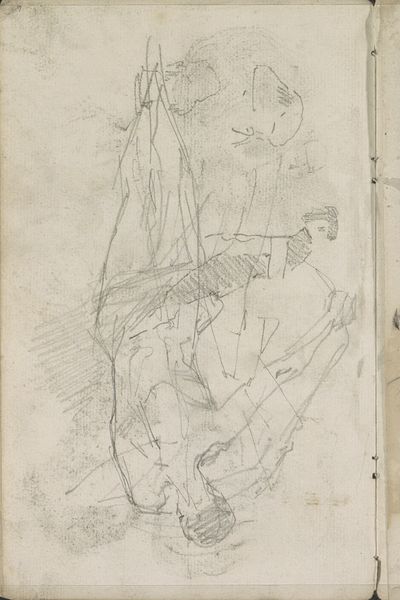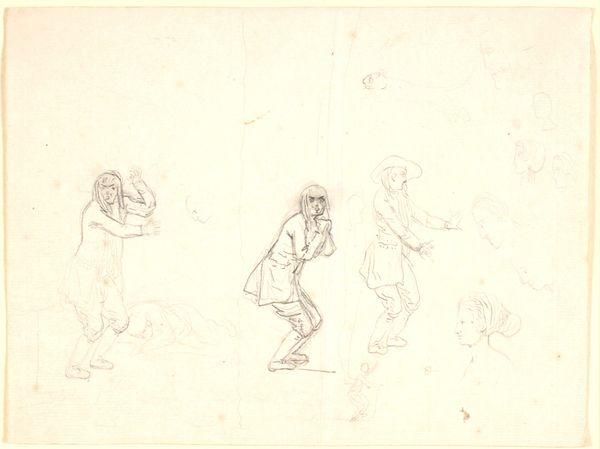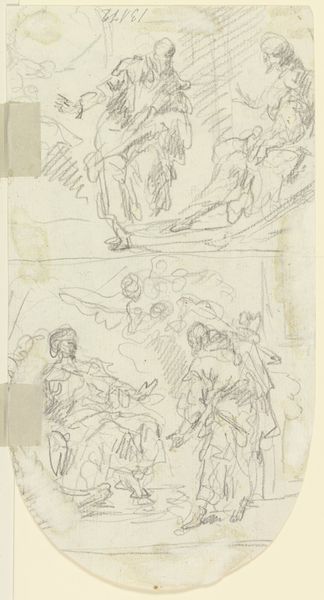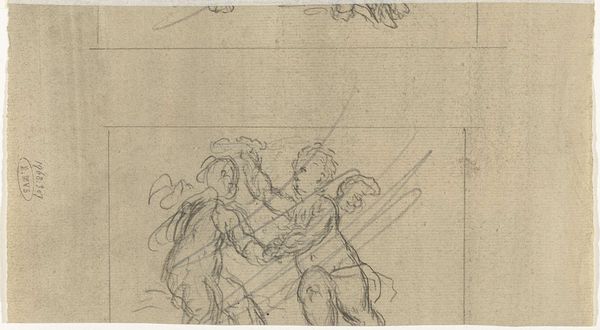
Study for "The Defeat of the Floating Batteries at Gibraltar" 1783 - 1786
0:00
0:00
drawing, pencil
#
drawing
#
pencil sketch
#
figuration
#
pencil
#
history-painting
#
academic-art
Dimensions: sheet: 36.51 × 56.83 cm (14 3/8 × 22 3/8 in.)
Copyright: National Gallery of Art: CC0 1.0
Here we see John Singleton Copley’s study for "The Defeat of the Floating Batteries at Gibraltar," rendered in graphite on paper. Copley, an American artist who spent much of his career in England, created this sketch as preparation for a large-scale painting commissioned to commemorate a British military victory. In this study, we find an initial exploration of how men confront conflict. Yet it subtly reflects the complex layers of identity, race, and class inherent in the theater of war. The figures in the sketch, presumably British soldiers, are depicted in the heat of battle. Consider how the artist frames this moment of conflict, likely charged with the emotional weight of patriotism and allegiance to empire. How might this representation serve to reinforce notions of British superiority and valor, while perhaps obscuring the human costs of war? How does Copley’s approach contribute to the creation of a national narrative?
Comments
No comments
Be the first to comment and join the conversation on the ultimate creative platform.
